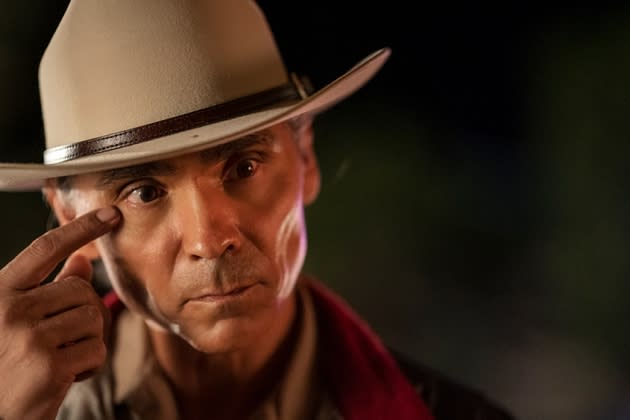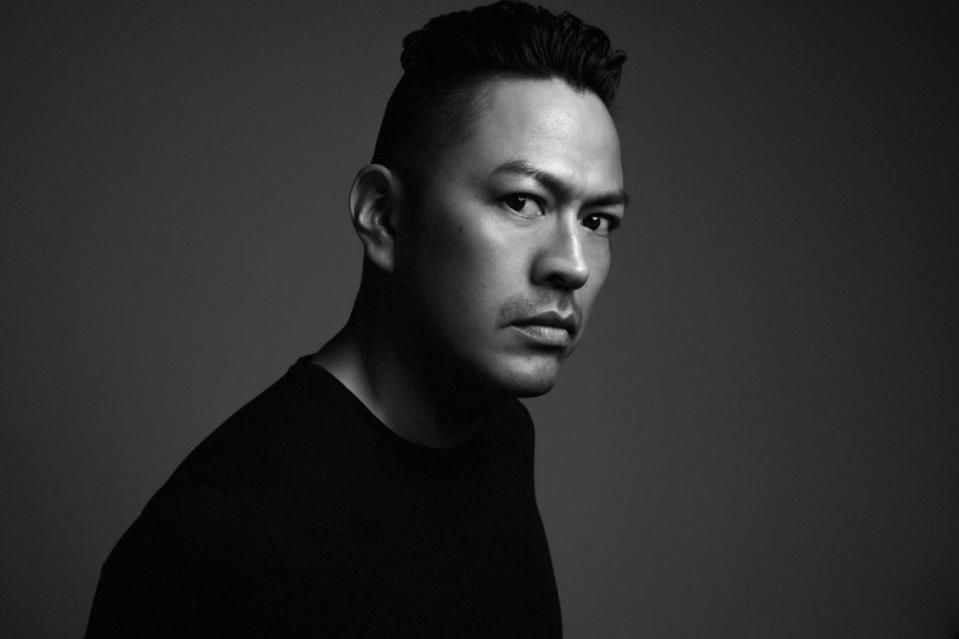‘Dark Winds’ Writer Billy Luther on Native Representation: ‘We Didn’t Need to Explain Everything, We Just Showed It’

AMC’s groundbreaking thriller Dark Winds is headed for a second season. The well-reviewed show features a team composed almost entirely of Native Americans in front of and behind the camera. From the top down, it was important to the creators to raise visibility across the board, from the writer’s room to the cast, directors and crew, and on screen.
Based on Tony Hillerman’s mystery novels, the series follows Joe Leaphorn (Zahn McClarnon), a lieutenant with the Navajo tribal police, as he works alongside a brand new deputy, Jim Chee (Kiowa Gordon).
More from Variety
'Severance' Creator on the 'Significance' of Lumon's Goats and Getting Off Reddit to Write Season 2
'Black-ish' Alums Yara Shahidi and Marcus Scribner on How 'Grown-ish' Will Now Focus on Junior
Writer Billy Luther (“Frybread Face and Me”) shares how representation in the writer’s room helped to deliver accurate portrayals of the Native community and what mattered when sharing stories about cultural representation with mainstream audiences.
How did the creators discuss authenticity with the writers?
I think the word authenticity gets thrown around a lot. The books were based in the ’70s and ’80s and written by Tony Hillerman, who was not Native. But there also wasn’t much out there at the time except for what you saw in the past, stereotypical Indians. Tony shifted a little bit and wrote about Navajo cops, which was different. Robert Redford has been trying to do something with these books too – and a couple of films were made for TV.
So much of the show is about reclaiming the narrative, reclaiming native traditions that are so often misrepresented by Western culture, how does the show work to rewrite that?
We wrote what we knew. We didn’t band together and say, ‘Oh my God, we need to stand up and challenge every aspect of Native misrepresentation on TV.’ When we were telling the story of Chee ( Kiowa Gordon) we were writing about his connection to his identity and culture. With Leaphorn (Zahn McClarnon), it came naturally. Being multi-tribal was an experience close to me, so I identified with Chee and his journey of returning home. We weren’t trying to be political about it, we just wanted to entertain.
As for educating, that connection can happen naturally when you’re engaging an audience.
How did you want to dip your toes into the mythology and supernatural elements without having them over-emphasized in the story?
As a group, we didn’t want to focus on the supernatural elements that were out there and write things like shapeshifting. This was very much about bringing it back home to what the story is – the complex lives of these characters. We were allowed to reclaim these stories that Hillerman wrote about and bring our connection to it.
Idris + Tony
You also talked to close family members and friends for research and mentioned they were a great source for you, what was that like?
Writer Razelle Benally and I are both Navajo, mixed with other tribes, and we both relied a lot on our family and close friends when we had a question about something that was era-specific. We’d ask questions, like, ‘Would a Navajo woman in that era do this?’ So, that was great to have this resource from the community. Razelle and I also come from different parts of the reservation, and the way someone spoke the language differed based on location. There’s also slang that this generation has that didn’t really exist in the ‘70s. So, we kind of had to pull that back.
It’s a lot of weight to carry as writers in the room with something so new to an audience. There are only a few Native TV shows out there so I know we’re all under a microscope.
I hope that these shows inspire young artists to pursue work in the industry – we need more Native showrunners, writers, actors, camera and crew on sets. It makes a huge difference.
Episode 3 really dives into Dine culture, something we have never seen on TV. What was it like getting to do that dive and explore in terms of cultural representation and rituals?
Razelle and Maya Rose Dittloff wrote a beautiful script that tied in with Leaphorn’s niece’s coming-of-age ceremony. It’s something that young Navajo women go through. How they wrote it was really special, beautiful and visual. But we didn’t need to explain everything that was happening. We just showed it, and by doing that, they did a great job. It’s like with “Crazy Rich Asians” and mahjong. You didn’t need to know the specifics, they just showed it. When we were discussing it, the producers were very excited for it. It was also being respectful of it. I loved that we were exploring this world and I think people haven’t seen this world before. I hope if they want to know more, they can do their homework.
Also, in the fourth episode with the white helmet that’s purchased from the flea market, that was one of my favorite things that I wrote because those flea markets are just part of our daily life. I remember purchasing a VHS of Barbra Streisand’s “Color Me Barbara” when I was younger at the Window Rock flea market. It was just being able to sprinkle in elements of rez life into the story.
What can we look forward to?
Season two is coming, which I’m excited about. Tony created this world, it’s not a documentary. Some of my family had his books, and you have to remember that’s all the representation that they had of Natives at the time. It was about cops solving crimes, so it’s cool to be a part of something that had a cultural impact on them, and now we get to go deeper as well as put our own twist on it.
Best of Variety
Sign up for Variety’s Newsletter. For the latest news, follow us on Facebook, Twitter, and Instagram.


